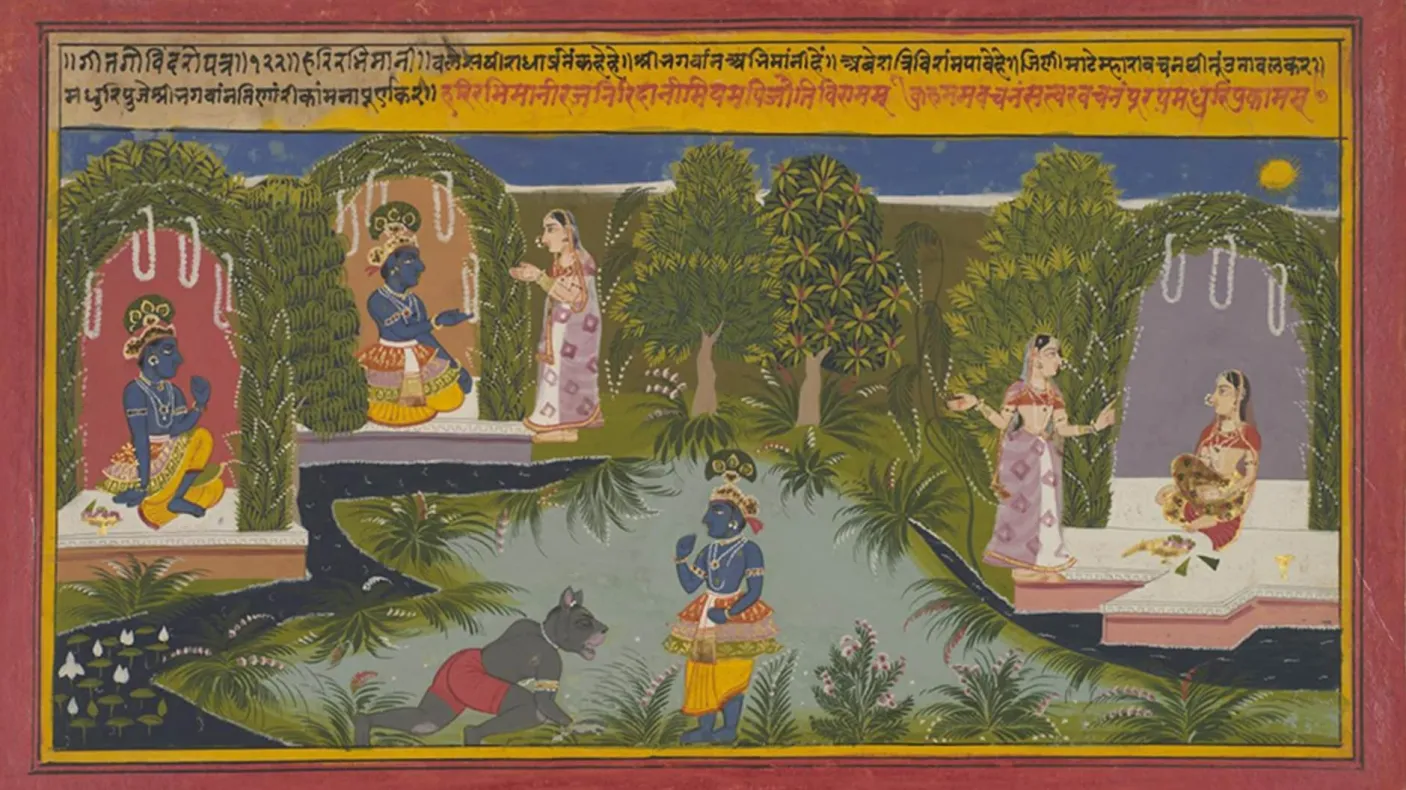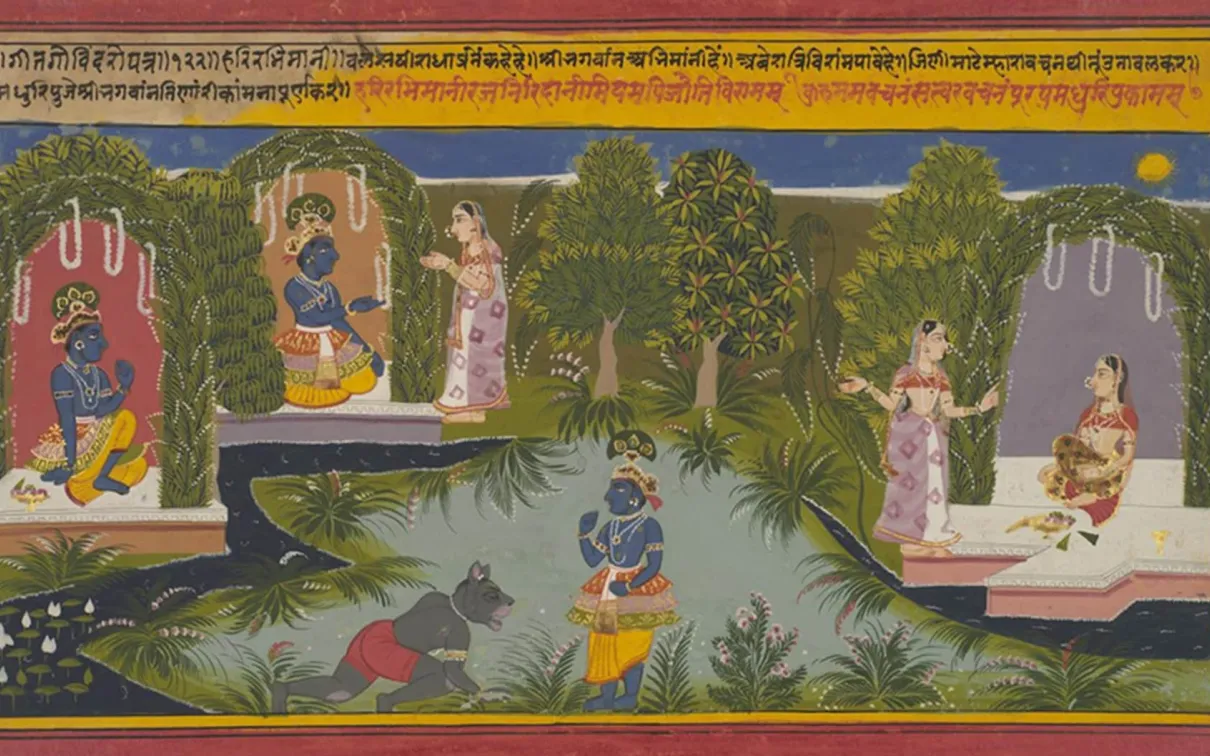Sacred Nature in Indian Painting
A closer look at how the Little Ice Age spurred a plant-based theology that manifested itself in paintings.
Published
Category
This painting is from a widely dispersed manuscript
This painting is from a widely dispersed manuscript called the Mewar Gita Govinda, completed in 1714 in honour of Mewar kind Sangram Singh II, under the supervision of Rupaji Bhatt.
It recounts the relationship between Hindu god Krishna and gopis (female cow herders) and one special gopi, Radha.
This image represents Braj, the pastoral region in north central India along the Yamuna river in the state of Uttar Pradesh, believed to be inhabited by Krishna. Recent scholarship by Sugata Ray argues that Braj is often represented in art as a lush terrain, not because it was actually that way but because climate change in the region in the wake of the Little Ice Age (c. 1550–1850) instigated a plant-based theology that considered each stone, river, and tree as sacred. Braj is represented as an idealized landscape.
Krishna is depicted with blue skin and wearing a crown with a peacock feather. He is shown multiple times in keeping with conventions of Indian painting, reflecting several scenes from one story within a single frame. In these works, the scene takes place amidst lush trees, vines, and garlands, where a female messenger goes from Radha to Krishna to deliver news of Radha's thoughts of her beloved. Krishna’s love of Radha is meant to be a metaphor for the human soul’s allegiance to the divine.
In Indian painting, nature, or the countryside, is a space of possibilities. It is where spiritual retreats, leisure activities, romantic encounters, and tests of skill take place. It is also often considered the abode of the gods, where divine beings go about human-like activities. Elements of nature in these paintings are executed with wondrous detail by masterful artists. The natural world, in the tradition of Indian painting, is as important as the figures who inhabit it.
Listen to a conversation
Listen to a conversation between Deepali Dewan and Cam Galindo, hosted by Massey College as part of their Curators in Conversation event.
Deepali Dewan
Deepali Dewan is Dan Mishra Curator of South Asian Art & Culture at ROM.




